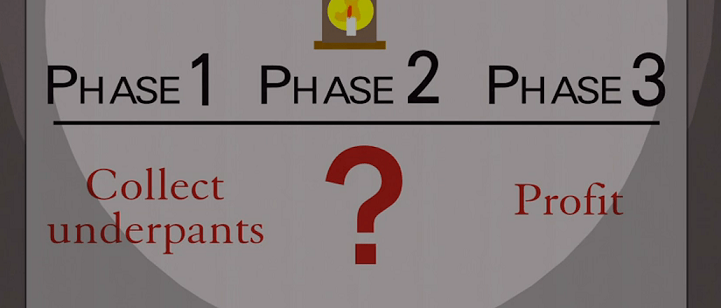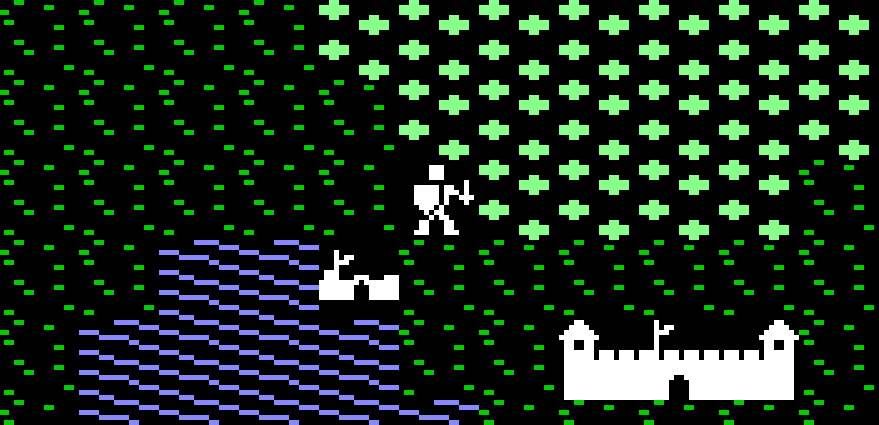I spend a day each week with my professional hobby. I promise I will actually talk about it soon. I do not want to share the details while it is still approaching “Da Real MVP”. The “DRMVP” is the “MVP” you launch after you build your first “MVP” and discover it is not “V”. If you do not know that MVP is Minimum Viable Product, by the way, we should talk more often.
I am paying someone full time to work on this product. I am hopeful that we will be able to make some money off of it somewhere. If you want to know more about what I am building, search my blog for the subject of Joe the Elf. Okay fine. It is located at Joe-The-Elf. Happy? I saved you some typing. Read that later if you haven’t already.
I am paying to build this product in its entirety because it constitutes enough risk that no one in their right mind should put a dollar towards it. I could probably convince someone that it is worthwhile to invest in this product; however, I absolutely guarantee that I would spend more time trying to convince someone of that than actually building it. Maybe it means I am a shitty salesman. I don’t know.
I do have one other project that I think would be fundable. Something something NFT. I also know that it will be an uphill project to get it funded because it is the second professional hobby I am starting. My theory is that my first project will launch and require a little bit of attention here and there, but it will effectively be operating with minimal adult supervision very soon.
The problem I am going to have with raising money for my second project has already manifested itself. I have been given extremely negative feedback about raising money for it twice by people I really appreciate, and once in video form, while listening to someone who is an investor in the something-something-NFT space.
“You are not serious about your project if you are not on it full time”.
I listened to them. Really I did. I bit back the urge to send them a fax with my feedback.
The truth is that it is a bunch of bullshit. I won’t go into the long conversation about family, children, life choices, and investors that will invariably ensue. As a parent of six kids, one in college, it is probably not a good idea to go all in 100% on my professional hobby even if it possesses outsized returns. You cannot buy baby clothes with options, nor pay for college with equity.
Somehow my life choices make me a bad entrepreneur.
Okay. Accentuate the positives. I want to talk about Elon Musk. Actually, I don’t. Not really. Enough people talk about Elon Musk. Let’s think about him for a minute, shall we?
If you asked an investor today if they would invest in Elon Musk’s company, they would probably say yes. They might also ask “which one”?
According to the collected wisdom of the easily-distracted investor, Elon Musk is also a bad entrepreneur.
From the boring company, to space trucks, to rocket ships, to electric cars and flame throwers, the dude has got some serious focus issues, right?
And yet, he totally would be worth putting your money to work.
That is because Elon Musk is an ultrapreneur.
What-the-what-what?
If you spend any time looking at investor stats, you will observe that a large number of investors throw money at young folks fresh out of college (whether they completed it or they dropped out of it; it does not matter). The burn rate of a single person who shares an apartment with two other people is remarkably low. It means you can write a lot of checks to a lot of people. A lot of very similar people.
You might see where I am going with this. There are studies out there about the best age to be an entrepreneur from a return-on-investment perspective. There is a bit of a disconnect between the pattern of behavior of investors and the pattern of returns.
If you expected me to say “something-something-cognitive-bias”, you are right. Everyone pattern-matches on the young tech bro who can build a whole product for what it costs me to keep my kids fed and clothed and in college for a year.
Let’s go back to my new word: The ultrapreneur.
What exactly is that?
An ultrapreneur is someone who is making a new business as a part time project.
There is a vast untapped ocean of people who have the vision and dream to build something amazing while blending it into their current work-life balance. Sometimes that work-life balance involves family, and sometimes it might involve additional part-time professional obligations. A good number of friends of mine are building really awesome projects on their own time and dime because they have done the math and concluded that in the amount of time it would take for them to write it all up and convince someone to take an investment journey with them, they could have just built the thing and shown off the investment hypothesis in a live trial. Given how little it costs to build products now, you will see more and more of this happening.
I think that, over time, the investment community has neglected and dismissed the bulk of the ultrapreneur crowd. The exception here is when it is someone who has already demonstrated a few significant exits, such as the aforementioned Elon Musk.
As the current venture model patterns crack and show signs of strain, I am expecting a tectonic shift into alternative funding patterns. Sequoia Capital has figured this out. They are focusing on optimizing their exit strategies. Eventually, venture capital firms are going to start examining the top of their funnel. Less “four twenty year old dudes sharing apartments while they work eighty hour weeks” and more of something else. I want to spend some more time unpacking this in the future with you all.
Unfortunately, I need to get back to work on my hobby project now that I have basically raised a giant middle finger to the entire institutional capital industry… I hope to inspire additional people to become ultrapreneurs when my project becomes successful!
PS: Yes there is more to come. Consider this to be one of them teasers that gets dropped on you by the Netflix.








